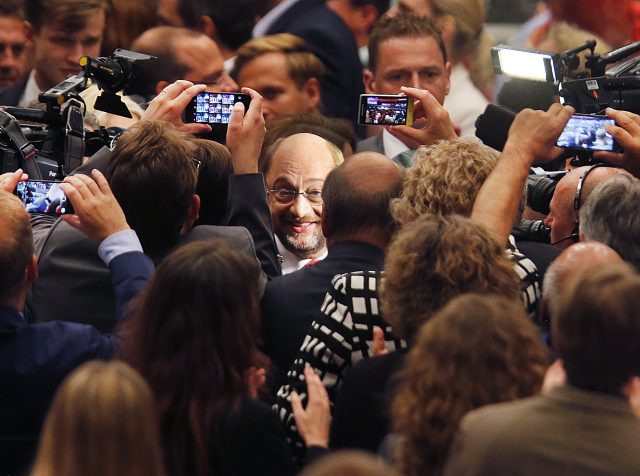Germany election 2017: How the voting works
Germans go to the polls on Sunday.

German voters will elect their new parliament on Sunday, but do not expect a new government to be in place next week.
With the seats expected to be spread across up to six caucuses, there is very little chance of anyone winning a majority to govern alone. After voters have had their say, it is down to Germany’s political parties to put together a coalition to govern for the next four years.
Each of Germany’s 61.5 million eligible voters gets to make two crosses on the ballot paper — one for a directly elected representative, the other for a party.
Half the seats in the lower house of parliament, or Bundestag, go to the directly elected lawmakers, one for each of the 299 constituencies. They are elected by a simple majority.
The other 299 seats go to candidates elected on party lists. The party vote is critical because it determines the percentage of seats each party wins in the lower house, which in turn elects the chancellor.
To share in the division of seats, a party must win at least 5% of the party vote or have at least three directly elected lawmakers.
If a party wins more seats via the direct vote than it would get under the party vote, that party keeps the extra seats – but the system also adds seats for other parties to ensure that the proportional vote is reflected properly.
That means the lower house could have considerably more than the minimum 598 lawmakers. The 2013 election produced a 631-seat parliament.

Germany’s voting system has not produced an absolute majority for one party in decades. The country has no tradition of minority governments, so the next government will almost inevitably be a coalition.
Angela Merkel, a conservative, has governed for the past four years with the centre-left Social Democrats. That “grand coalition” of the biggest parties had a huge parliamentary majority, but the two are traditional rivals and the combination is not popular with the parties’ members.
Mrs Merkel can hope for a centre-right majority with the pro-business Free Democrats, with whom she ran Germany from 2009 to 2013, or an alliance with the traditionally left-leaning Greens. If neither combination wins a majority – as recent polls suggest – an alliance of Mrs Merkel’s conservatives with both the smaller parties could be tried for the first time. The combination is called a “Jamaica” coalition because the parties’ colours match those of that country’s flag.
Polls suggest Mrs Merkel’s challenger, Social Democrat Martin Schulz, is likely to fall short of a majority for any alliance that would make him chancellor. He could in principle govern with the Free Democrats and Greens, or with the Greens and the Left Party.
One thing appears certain: the next government will not include the nationalist, anti-migration Alternative for Germany, or AfD. All other parties say they will not work with it and AfD itself treats what it calls “the old parties” with contempt.
Not so fast. It will take at least a few weeks to hammer out a coalition deal, possibly longer.
In 2013, Merkel’s “grand coalition” took office just before Christmas, around three months after voters had their say. That was a record for post-Second World War Germany, but could be matched or exceeded this time. In the meantime, the existing government stays on a caretaker basis.
Parties may be reluctant to show their cards before an October15 state election in Lower Saxony, one of Germany’s most populous regions. And a coalition deal may need endorsement from members of at least one party. Four years ago, a ballot of the Social Democrats’ members accounted for much of the delay.
President Frank-Walter Steinmeier proposes a chancellor to parliament, usually once a coalition deal is in place. That candidate needs a majority of all lawmakers in the lower house to take office. If lawmakers fail to give a majority to one candidate in three tries, Mr Steinmeier could appoint a minority government or dissolve parliament.
The lower house is elected for a four-year term.





